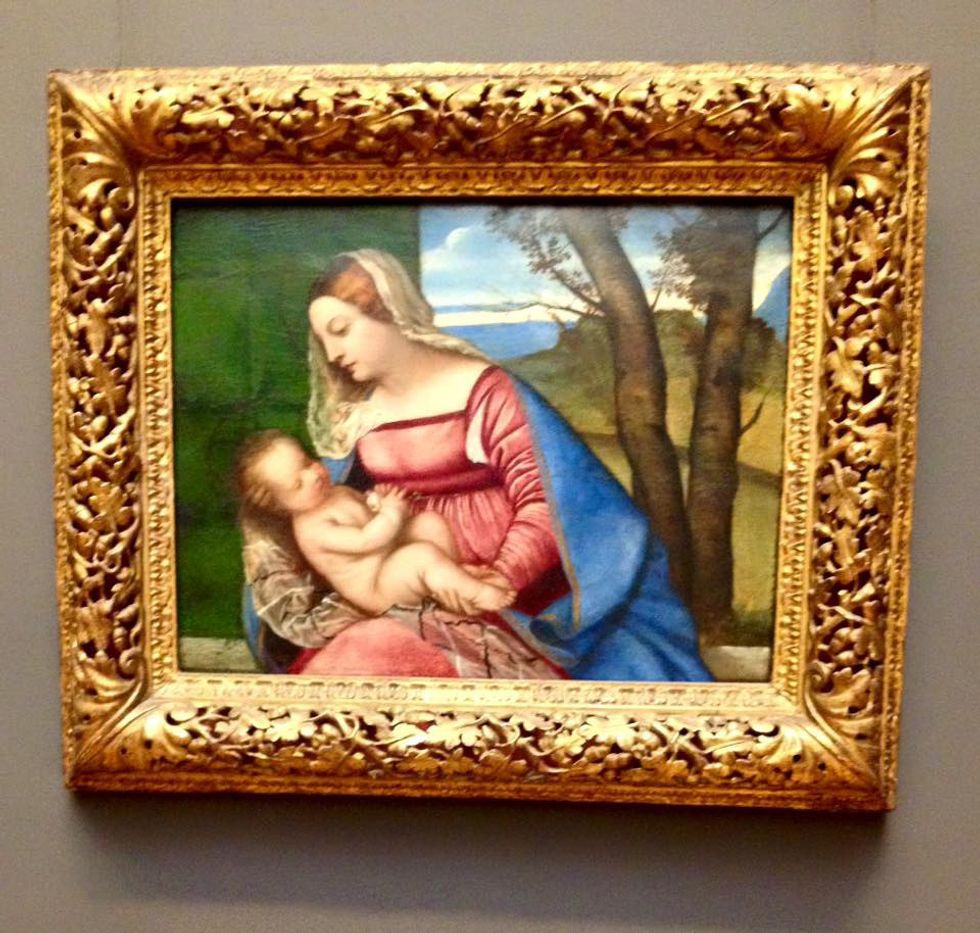Being a dancer, my role is automatically categorized under the art field. All beings within this umbrella can be defined as artists who are forced to reach out of their comfort zones, experiment and trust in their craft, be shut down, occasionally admired, and in return credited not for the labor but for the vision provoked. It is not a study one involves himself in without expectations to fail multiple times before reaching a destination, which in this case is unknown. An artist often has no final objective for his or her works other than the pieces reflect marks of improvement and progress in seeking the concealed. In addition, it is more often than not an artist is honored post-life.
With this being said, for my own pleasure the observational artwork I chose to delve deeper into an artist with whom I thought I could best relate my own practices. Familiar with the idea of structure and formality in ballet and modern classes, the initial proposal with which I went forth was the era of sixteenth-century Venetian art in Italy. Its primary focus puts emphasis on form, intellectual themes, heroic ideas, and it is commonly known for its arrangements.
Some characteristics also include obscure iconography and stormy backgrounds which are comparable to those viewed in a technique dance teaching for everything is considered “art” for if it could be put into words there would be no reason to present it elsewhere. Moving further internally I settled on an artist, better than the best of the sixteenth century, Titian (Tiziano Vecellio), as my main focal point during my time spent in the Metropolitan Museum of Art in New York City. He established many compositional elements that became the standard for this time, many comprising of portraits of leading figures and religious or mythological works, thus leading me to one of his famous and earliest devotional painting pieces entitled "Madonna and Child" which is of oil on wood creation.
In reference to the Metropolitan Museum’s write-up about this piece, research has revealed that Titian’s first intentions were to position the figures sitting erectly and direct center, a trait more frequent of his trainer, Giovanni Bellini; however, the concluding painting displays a more informal posture just off-center suggesting a genre setting where the mother is performing maternal impulses holding her child on her lap. There is a recollection feeling conveyed and transferred from the painting into reality of a mother addressing her child sensually while deepening the impression of affection – the instinct to make any child who needs her love, her own. The Virgin is seen wearing a red dress accompanied by a blue robe or cloth along with a white almost see-through headdress under which Christ lay bare and exposed.
Here the audience is able to appreciate Titian’s great use of color and lighting in his paintings for there is a distinct and intricate attention given to detail and line. It is not a horizontal organization, but rather set on a diagonal with perspective and directional lines. The figures come into view grand in size, a purposeful assembly, but the landscape and background are still noticeable and not mislaid due to their complexion. Titian keeps the viewer active as he moves our eyes back in the painting by constructing progressively smaller units of space the further one looks back. The landscape showcases precise coloring, placing, and forms with painting to produce a sense of equilibrium. There is a slight repetition found within the shadow of the blue robe worn by the Virgin, as well as in what appears to be the ocean or sky in the background, offering a settle dedication to light and beauty.
Various insignia is interwoven in this work leaving the narrative up for discussion- typical of Venetian paintings. The figures are calm, and there is the suggestion of nature versus man rendered within the composition. Two trees stand abruptly, one completely vertically while the other on a slant, giving realization to the Venetian mood that consisted of nature’s abundances such as nude, softening, and shades for example. The trees' tinting incorporate a complimentary saturation to the work for the spotlight remains on the individuals, but the naturalistic tonality and values play a role in this particular worldly occurrence. It is obvious Titian was being realistic when it came to commencing this artwork, although what defines his work amongst the other artists of this time is his use of contrast. Despite his picturing being sensible and practical, his exhibit of pictorial art does not provide a lucid storyline.
What is also interesting to note is the inferred Christ Child looking at a diverse angle down to the right side while the Virgin makes it evident to stare downwards at her son.In this type of projection of the Virgin and child, it could be understood as a foreshadowing of what is to come under Mary’s nurture as He matures and grows to His own supremacy glancing in the heavens above His people. Here Christ is personifying the prospect. Dating back to about 1508, unfortunately, the picture in the museum has lost most of its delicacy in terms of definition due to an excessive amount of cleaning and restoring. Nonetheless, following the fifteenth century, a time where there were heavy and discrete upheavals in religion between the Protestants and the Catholics this piece brought stronger interest in synthesizing both artistic development as well as concentration in beliefs once again appropriate to the technique.
The style is a clear illustration of a period or characterization for an outside observer. It generates context for sculpture, architecture, painting, printmaking, drawing, photography, craft arts, or arts of design. Furthermore, it shows attributes to the artist’s life, what life was like, and indicates a reflection of responses by the patrons during the age. The sixteenth century Venetian art is recognized for their clear-cut and “ideal” imageries, a term referred to by the citizens as arcadia which is identified as any place that is “perfect” of world peace, tranquility, and simplicity, which was only reiterated a century later by another artist, Peter Paul Rubens, who chose to take Titian’s ideas and expand upon them.
Ruben was a Flemish master of painter, a contemporary of Velázquez, who was distinguished by his use of a combination of Italian Renaissance with Italian Baroque to found a newer style. If one were to pinpoint his influences they would include dynamic composition, painterly technique where edges are blurred rather than sharply defined, broad masses of light and dark, and linear compositions. He can easily be compared to Titian as Ruben’s expressed symbols and rich colors that gave life to his textures and forms. There are continuous patterns in his work that give intense emotion of faces, and demonstrate more than one icon — emphasis on energy and movement, without rest. Italian art dedicates a good portion of their inspiration to dynamic diagonal compositions and dramatic lighting in which Ruben recycled in his paintings. In one of his works titled Elevation of the Cross, the spectator can specify similarities to those studied by the Italians such as its orientation to religious virtues, coloring and theatrical manifestation. Although Rubens enhanced his paintings through the use of his emotional sentiment, there is evidence his roots came from.
Titian’s original plan on producing a mood and innovative ways to build balance within a composition. Although many artists took from prior masters and it was not of his or her foremost theories, art is instinctive and constantly evolving within each generation- a never ending learning process. It is not confined to any set rules unless given them for it is a discovery of freedom and perceiving of vision.






 Photo by
Photo by  Photo by
Photo by  Photo by
Photo by 


















